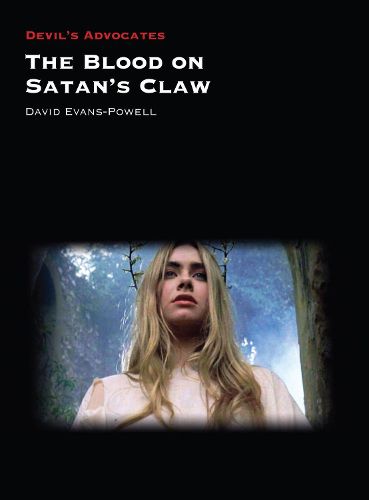Readings Newsletter
Become a Readings Member to make your shopping experience even easier.
Sign in or sign up for free!
You’re not far away from qualifying for FREE standard shipping within Australia
You’ve qualified for FREE standard shipping within Australia
The cart is loading…






Widely regarded as one of the foundational ‘Unholy Trinity’ of folk horror film, The Blood on Satan’s Claw (1971) has been comparatively over-shadowed, if not maligned, when compared to Witchfinder General (1968) and The Wicker Man (1973). While those horror bedfellows are now accepted as classics of British cinema, Piers Haggard’s film remains undervalued, ironically so, given that it was Haggard who coined the term ‘folk horror’ in relation to his film. In this Devil’s Advocate, David Evans-Powell explores the place of the film in the wider context of the folk horror sub-genre; its use of a seventeenth-century setting (which it shares with contemporaries such as Witchfinder General and Cry of the Banshee) in contrast to the generic nineteenth-century locales of Hammer; the influences of contemporary counter-culture and youth movement on the film; the importance of localism and landscape; and the film as an expression of a wider contemporary crisis in English identity (which can also be perceived in Witchfinder General, and in contemporary TV serials such as Penda’s Fen).
$9.00 standard shipping within Australia
FREE standard shipping within Australia for orders over $100.00
Express & International shipping calculated at checkout
Widely regarded as one of the foundational ‘Unholy Trinity’ of folk horror film, The Blood on Satan’s Claw (1971) has been comparatively over-shadowed, if not maligned, when compared to Witchfinder General (1968) and The Wicker Man (1973). While those horror bedfellows are now accepted as classics of British cinema, Piers Haggard’s film remains undervalued, ironically so, given that it was Haggard who coined the term ‘folk horror’ in relation to his film. In this Devil’s Advocate, David Evans-Powell explores the place of the film in the wider context of the folk horror sub-genre; its use of a seventeenth-century setting (which it shares with contemporaries such as Witchfinder General and Cry of the Banshee) in contrast to the generic nineteenth-century locales of Hammer; the influences of contemporary counter-culture and youth movement on the film; the importance of localism and landscape; and the film as an expression of a wider contemporary crisis in English identity (which can also be perceived in Witchfinder General, and in contemporary TV serials such as Penda’s Fen).